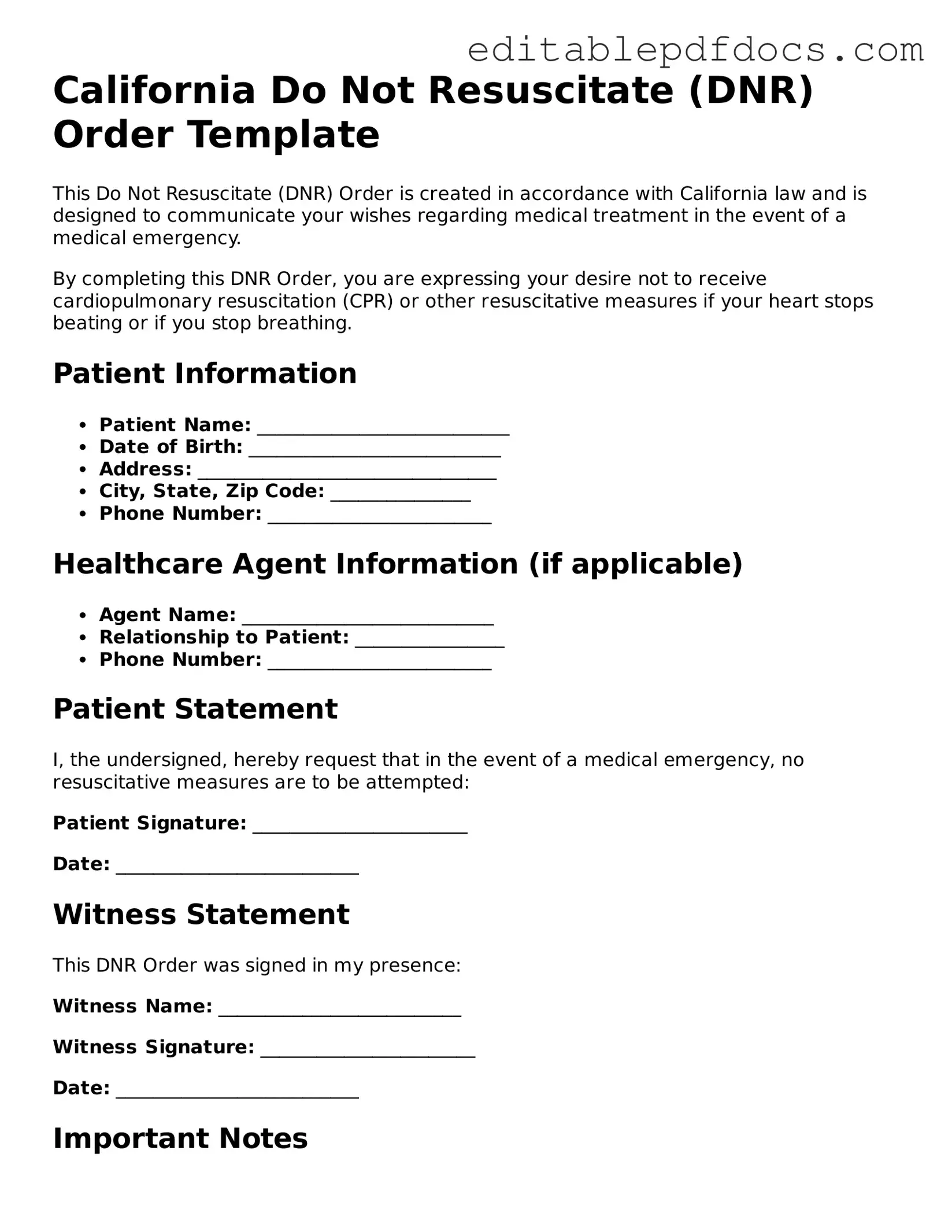The California Do Not Resuscitate (DNR) Order form is an important document for individuals who wish to express their preferences regarding medical treatment in emergency situations. This form allows patients to indicate that they do not want resuscitation efforts, such as CPR, if their heart stops or they stop breathing. It is designed for those with serious health conditions or terminal illnesses, ensuring their wishes are respected during critical moments. The DNR form must be completed and signed by the patient or their legal representative and a physician to be valid. It is essential for individuals to understand how this document works, its implications, and the process for revocation if their wishes change. Additionally, this form is recognized by emergency medical services, which means that first responders are legally obligated to follow its directives. Having a DNR Order can provide peace of mind, allowing individuals to make informed choices about their end-of-life care while sparing loved ones from difficult decisions in times of crisis.
